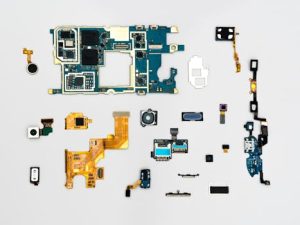The New Dashboard: Thought-Control Display
The technology landscape never ceases to amaze us. Yet another groundbreaking innovation has taken the tech world by storm – the thought-control display. The idea of a dashboard that can be controlled purely by the power of the mind may sound like something out of a science fiction movie, but it is now a reality. This revolutionary concept promises to change the way we interact with technology and opens up a whole new world of possibilities. In this article, we will explore the new dashboard: thought-control display and its potential impact on both personal and professional spheres.
The Basics of Thought-Control Display
What is a Thought-Control Display?
At its core, thought-control display is a technology that allows users to interact with devices using their thoughts. It works by detecting and interpreting brain signals and translating them into actions on a screen. This means that instead of using a physical interface such as a keyboard or a mouse, the user can control the device simply by thinking. This technology combines advanced neuroscience and computer science to bridge the gap between humans and machines.
How Does it Work?
Thought-control display works by using brain-computer interface (BCI) technology. The BCI device uses electrodes placed on the scalp to detect and record brain activity. These signals are then sent to a computer, where they are interpreted using specialized software. The computer then translates these signals into commands that can be understood by the device, allowing the user to control it with their thoughts.
Potential Impact on Personal Use
Improving Accessibility
One of the most significant benefits of thought-control display is its potential to improve accessibility for people with disabilities. Traditional input methods such as a keyboard or a mouse can be a barrier for people with physical disabilities. Thought-control display, on the other hand, allows for a more natural and intuitive way of interacting with technology. It opens up a world of possibilities for people who may not have had the opportunity to use technology before.
Enhancing Virtual Reality
Virtual reality (VR) has been gaining significant traction in recent years, but one of the limitations it faces is the clunky and sometimes uncomfortable controllers. With thought-control display, these controllers may become obsolete, creating an even more immersive VR experience. Users can navigate and interact with virtual environments simply by thinking, making the experience more realistic and enjoyable.
Potential Impact on Professional Use
Productivity Boost
Thought-control display has the potential to increase productivity in a professional setting. By eliminating the need for physical input devices, users can seamlessly switch between tasks with just their thoughts. This can save valuable time and make multi-tasking a lot easier. Additionally, people with professions that require a high level of concentration, such as pilots or surgeons, can benefit greatly from this technology as it allows for hands-free control.
Revolutionizing Training and Education
Training and education can also benefit greatly from thought-control display. Immersive training simulations can be enhanced by allowing trainees to control the experience with their thoughts, making it more realistic and engaging. In addition, students with learning disabilities can also benefit from this technology as it offers an alternative, more accessible way of learning.
Further Developments and Challenges
While the thought-control display has immense potential, there are still some challenges to overcome. One of the main challenges is accurately interpreting brain signals and producing reliable results. Researchers are continuously working on developing more advanced algorithms and software to improve the accuracy of thought-controlled devices.
Another challenge is privacy and security concerns. As this technology relies heavily on collecting sensitive brain signals, there are valid concerns about data protection and potential misuse. It is essential for companies to develop robust security measures to protect the data of their users.
Conclusion
The thought-control display is a game-changing technology that has the potential to transform the way we interact with technology. While it is still in its early stages, the possibilities are endless. From improving accessibility to revolutionizing training and education, this technology offers a more intuitive and seamless way of interacting with devices. With further development and overcoming challenges, thought-control display may very well become a standard feature in our everyday lives.




